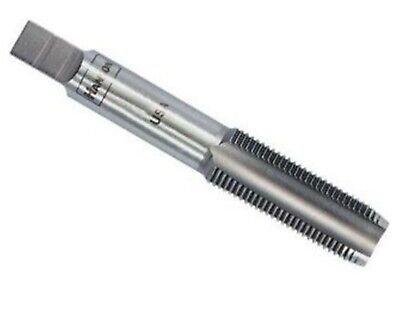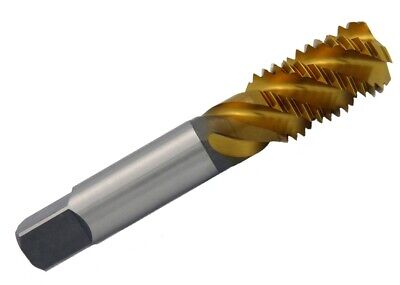I need to tap just 5 holes, and I didn't have any 5/16-18 taps on hand, so I bought a plug tap from the local ACE hardware, intending to follow up with a bottoming tap later. Brand Irwin I think. I drilled the holes with a "F" size drill (0.257in dia) as indicated on my drill chart, and chased the holes directly after drilling each one, with a spring loaded tap guide.
I was only able to tap just a few threads into the hole before the tap handle got too tight and I was afraid I'd break the tap if I went any further. I was turning the tap with a forward and backing motion to break the chips etc. Plenty of oil, etc. I'm aware that blind holes take some care, but the holes are approx 1in deep and cutting just a few threads doesn't generate enough chips to pack the hole. I blew them out with compressed air anyway and retried. Even with clean holes, the tap just won't advance more than a few threads.
I did check that the thread count on the tap matches the bolts but it's almost as though the minor diameter of the tap was mis-ground and is too large for the "F" size hole.
I'll investigate further with plug gauges, etc., but am confused what might be at issue here. Is hot rolled steel any more difficult to tap than cold rolled steel?
Any thoughts?
I was only able to tap just a few threads into the hole before the tap handle got too tight and I was afraid I'd break the tap if I went any further. I was turning the tap with a forward and backing motion to break the chips etc. Plenty of oil, etc. I'm aware that blind holes take some care, but the holes are approx 1in deep and cutting just a few threads doesn't generate enough chips to pack the hole. I blew them out with compressed air anyway and retried. Even with clean holes, the tap just won't advance more than a few threads.
I did check that the thread count on the tap matches the bolts but it's almost as though the minor diameter of the tap was mis-ground and is too large for the "F" size hole.
I'll investigate further with plug gauges, etc., but am confused what might be at issue here. Is hot rolled steel any more difficult to tap than cold rolled steel?
Any thoughts?
Last edited:





